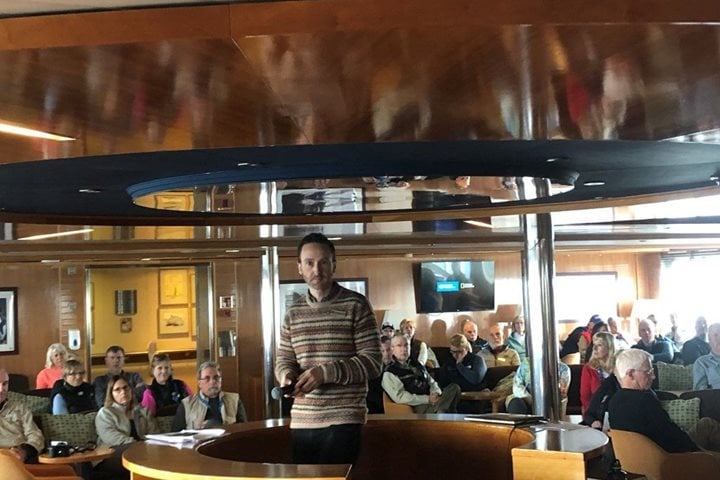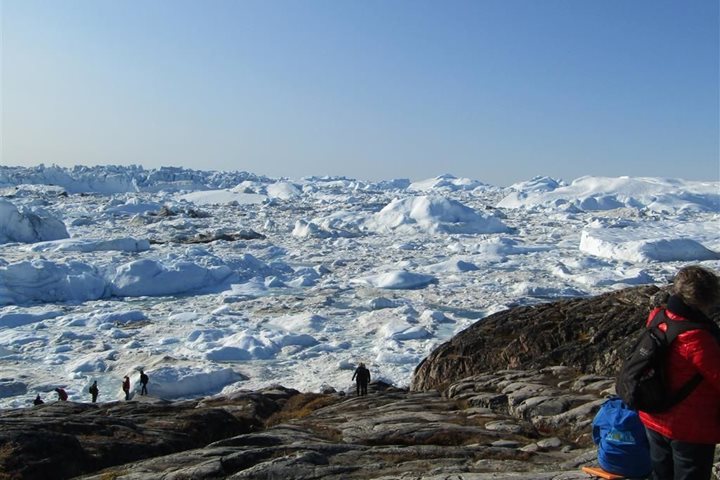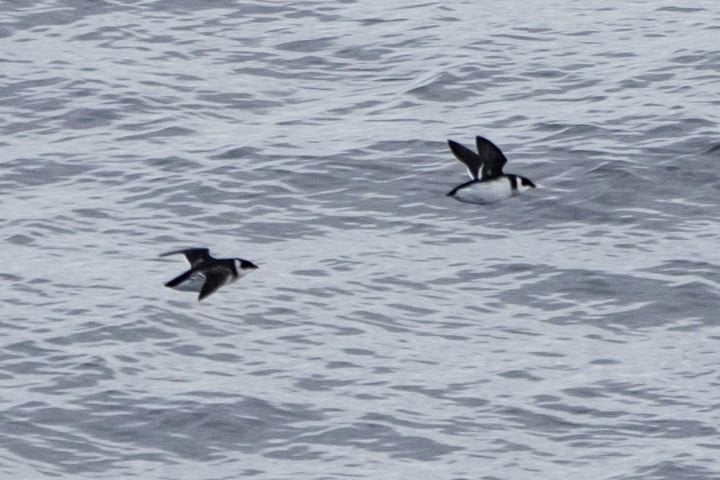Pack ice in the Arctic has been declining. Areas that not too long ago had dense multi-year pack ice are no longer ice-covered. The loss is seen as a long-term trend over many years, though local conditions can vary from year to year.
This summer has been cold in the eastern Canadian Arctic. Remnants of winter pack ice still linger. The Canadian ice pilot we have on board has been studying satellite-generated ice charts with the captain and expedition leader. Our hope was to spend time searching the remaining patches of pack ice which may harbor wildlife of interest.
An early wake-up call meant the day’s plans proved to be a good choice. A lone walrus, on the edge of a piece of pack ice, was spotted in the distance. Stepping out on deck for a better look at the walrus was a bit of a shock to some people—it was cold! There was no wind and it was heavily overcast, but looking out over the open drift ice, we could see the open water was rough. Grease ice had formed as a result of the mirror-like surface of the water and the slightly lower-than-freezing temperature. The surface had frozen between the big, flat pack ice left over from last winter. The first-year pack ice had lovely turquoise pools of water creating a puzzle-like pattern.
At the edge of one of the smaller ice floes was a brownish-reddish blob—one with a rounded head, stiff facial bristles, and two tusks. The captain slowly approached so as not to bother the beast. The walrus raised its head and looked around before going back to rest.
As we sailed through broken pack ice, it was thrilling to watch as the ship swerved and bashed through the ice. Looking into the distance, there was a strange mirage of ice cliffs and landmasses due to layers of different air temperature. The phenomenon is called Fata Morgana and it is common in the Arctic.
We spotted our first polar bear from a distance—thick ice did not allow us to get close. When the crew reported more sightings, we headed toward a polar bear closest to the edge of the ice for a better view. Patience is a virtue when watching wildlife, so we sat quietly, waiting for the bear to make its move. Our patience paid off. The bear came directly toward the ship—even springing across a channel of open water to approach. Suddenly the bear stopped, sniffed, decided the huge ship was of no interest, and turned away.
The rest of the day was spent scanning the ice for more wildlife. We spotted a number of distant bears and later traveled into a narrow fjord along the south side of Devon Island. For everyone, it was a spectacular day.







